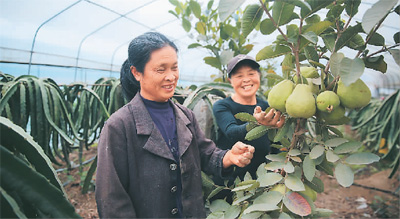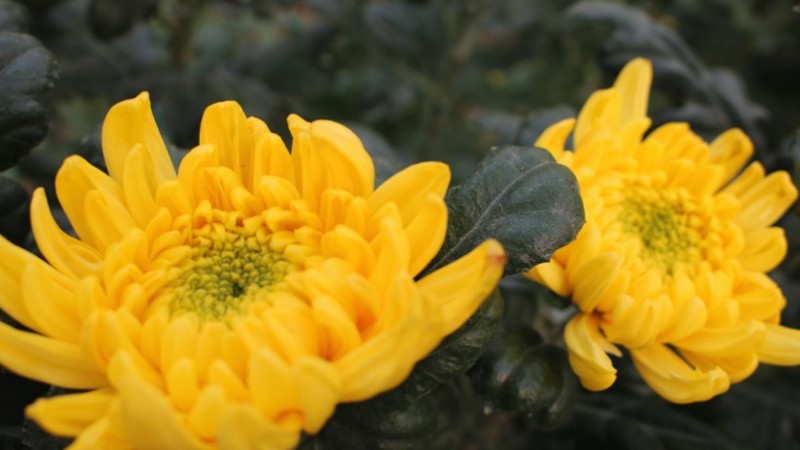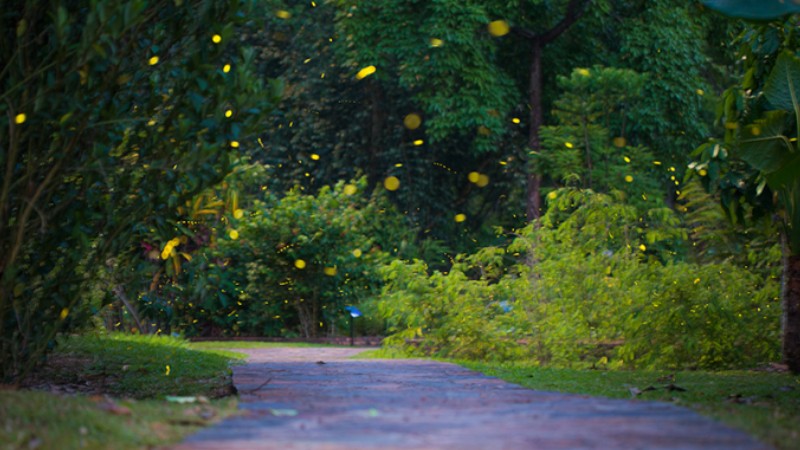China cultivates multiple high-end “foreign” fruits
In recent years, various high-end fruits from around the world have been successfully cultivated in China thanks to enhanced research and development (R&D) efforts.

Photo shows golden papaya trees at a fruit planting base of the “Window of the World’s Tropical Fruits,” a modern agricultural industrial park in Dalu township, Qionghai city, south China’s Hainan Province. (Photo courtesy of the interviewee)
Fruit trees from regions such as Central America, South America, and Africa, including white sapote, yellow dragon fruit, and fluted pumpkin, have been planted at a fruit planting base of a modern agricultural industrial park popularly known as the “Window of the World’s Tropical Fruits” in Dalu township, Qionghai city, south China’s Hainan Province.
The industrial park, built by Hainan Grand Modern Agriculture Development Co., Ltd., is a key project of the national pilot zone for agricultural opening up and international cooperation.
The project has so far brought in 500 kinds of “foreign” fruits such as finger limes originally from Oceania and mamey sapote, and has successfully planted more than 350 kinds of fruits. Over 20 among them have been cultivated on a large scale.
“We have introduced 30 kinds of fruits since the beginning of 2023,” said Zhao Dezhen, sales manager of Hainan Grand Modern Agriculture Development Co., Ltd.

Villagers check on the growth of guava, a tropical fruit, at a greenhouse in Kanda village, Oujiang town, Guidong county, central China’s Hunan Province. (People’s Daily/Deng Renxiang)
Tropical fruits including yellow dragon fruits, finger limes, and white sapote are planted on 30,000 mu (2,000 hectares) of land in Hainan, including about 5,500 mu in Qionghai city, which helps bring wealth to locals, according to Li Yuan, deputy administration manager of the company.
An increasing number of Chinese farmers have also planted Shine Muscat grapes, which originated in Japan, because it is one of the fruits with the highest profit margin per mu introduced from overseas. The grape variety has gained a great reputation in the market.
Wu Huaping, an executive of Huaxiao Agricultural Planting Co., Ltd. , brought Shine Muscat grape seedlings from places including Dali Bai Autonomous Prefecture of southwest China’s Yunnan Province and Shijiazhuang, capital of north China’s Hebei Province and planted the grape variety in 2016 by using modern large-scale planting techniques such as protected agriculture at a planting base in Qilin district, Qujing city, Yunnan.

A worker picks Shine Muscat grapes at an agricultural science and technology demonstration park in Qilin district, Qujing city, southwest China’s Yunnan Province. (Photo/Liu Wujun)
It was not easy for Wu to produce high-quality Shine Muscat grapes. After learning grape planting techniques from the internet, experts, and growers at planting bases in east China’s Shandong Province, Wu decided to plant Shine Muscat grapes in greenhouses by employing organic farming methods, such as the application of organic fertilizer and soil improvement. Eventually, Wu’s premium Shine Muscat grapes have been marked as green foods.
To ensure higher-quality Shine Muscat grapes, growers need to improve field management and follow strict standards for the cultivation of the grape variety, Wu said.
Thanks to the unremitting efforts of Chinese enterprises, domestically grown “foreign” fruits are sold to overseas markets because of their high quality and reasonable prices.
Li said finger limes from the planting base of the modern agricultural industrial park in Dalu township won a silver award at the 2019 Beijing International Horticultural Exhibition, and obtained a green food certification of China and a Global GAP (Good Agricultural Practices) certification of the European Union (EU) in 2021.
The industrial park has signed a strategic cooperation agreement with the EU-China Commission (EUCNC) to export finger limes. It has exported 2,000 mu of quality finger lime seedlings to countries like Thailand, Vietnam, and Cambodia. Its plantation for finger limes has become the largest planting base in Asia.

Visitors view tropical fruits from the “Window of the World’s Tropical Fruits” at the 2022 China (Hainan) International Tropical Agricultural Products Winter Trade Fair in Haikou city, south China’s Hainan Province, Dec. 15, 2022. (Xinhua/Guo Cheng)
Adhering to technological R&D is key to ensuring the high quality of domestically grown “foreign fruits.”
The plating base of the industrial park has also shouldered the responsibility of R&D on fruit seeds and seedlings. It has carried out comprehensive cooperation in the industrialization of milk fruits with the Shanghai Academy of Science and Technology. In collaboration with Hainan University, it has completed the genetic sequencing of more than 120 kinds of tropical fruits.
Wu’s company has installed sensors and other greenhouse environment monitoring devices and realized real-time management through a platform that supervises the quality of and tracks the origins of cold-chain agricultural products by cooperating with Qujing Applied Technology School .
“With the help of information technologies, consumers can confirm the authenticity of our grapes by scanning a QR code on each bunch of grapes, and we can grasp the situation, including soil conditions and fertilizer application, in our greenhouses in real time,” Wu said.
Photos
Related Stories
- Young man in SW China’s Yunnan leverages e-commerce to sell quality orah mandarins
- Useful sea buckthorn
- China leads world in fruit production
- Fresh Vietnamese durians imported to China
- More fruits will be exported to China: S. African growers association
- A look at local fruit market in Haikou, Hainan
- A peek into tropical fruit tree planting base in Hainan, south China
- Foreign fruit vendors see opportunity as produce prices soar in China
- China’s soaring demand for fruit benefits foreign fruit farmers
- Qiannan looks to fruit to boost economy
Copyright © 2023 People's Daily Online. All Rights Reserved.









